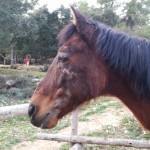 Ruminating. This is perhaps the most graphic, if not accurate, description of the process that has gripped me since our return from Spain last week. The intellectual equivalent of chewing the cud, rumination has provided me with the opportunity to reflect on the journey from which Vicki and I have just returned and to try and make some sense of it. Are any patterns evident? Is there a leitmotif that runs through my experience, a single theme which suggests itself? What did I see? Suffering, yes, the suffering of horses? Yes! What else did I see? Cruelty – yes, it would seem so – the cruelty of humans to horses. Yet also generosity – an unbridled generosity of the spirit and the body, so it would seem – on the part of humans to horses. But what to make of it? And then, as I did something utterly stupid with Pip, it occurred to me that I had witnessed strength and weakness and how the one can be found through the other. Come, sit with me and help me gather my thoughts….
Ruminating. This is perhaps the most graphic, if not accurate, description of the process that has gripped me since our return from Spain last week. The intellectual equivalent of chewing the cud, rumination has provided me with the opportunity to reflect on the journey from which Vicki and I have just returned and to try and make some sense of it. Are any patterns evident? Is there a leitmotif that runs through my experience, a single theme which suggests itself? What did I see? Suffering, yes, the suffering of horses? Yes! What else did I see? Cruelty – yes, it would seem so – the cruelty of humans to horses. Yet also generosity – an unbridled generosity of the spirit and the body, so it would seem – on the part of humans to horses. But what to make of it? And then, as I did something utterly stupid with Pip, it occurred to me that I had witnessed strength and weakness and how the one can be found through the other. Come, sit with me and help me gather my thoughts….
Andalusia
Our first stop was Malaga in Andalusia, where we stayed with Vicki’s twin sister, Agathe, and her boyfriend, Ron, in their beautiful finca in the Montes de Málaga, a forested national park in the hills to the north and east of the city, with its spectacular views across a valley leading down to the sea. Coming straight out of Holland’s cold, dark winter I was immediately tempted to pack up and move south. Unfortunately, I could not spy any appropriate accommodation for horses within the confines of that spectacular view, which put paid to that idea for the moment.
The next day the twins celebrated their birthday. Agathe had lined up a visit to a horse facility just outside Granada, where we planned to spend the night. The object of the visit was to look for a gelding for another of the twins’ numerous sisters. It was a harsh but illuminating visit, one which has haunted my waking moments since. Fortunately, the celebration of the twins’ birthday temporarily extinguished all memory of the occasion that evening as we immersed ourselves in merriment accompanied by fine Spanish wines and tapas.
Back in Malaga the next day we collected another two friends, Mike and Maria, and headed back to the finca in the hills to celebrate Ron’s birthday with a walk through the sunlit hills followed by drinks and a hearty meal. By the next morning Vicki and I were ready to head off for what we felt would be the next highlight of our sojourn in Spain, a visit to the horse refuge centre known as Los Caballos Luna in Spain and Paard in Nood Spanje in the Netherlands.
Ochet
As we drove eastward across Andalusia through the autonomous region of Murcia and into that of Valencia, I found my thoughts continually drifting back to the horses that we had encountered during our visit to Malaga. A visit to Agathe almost inevitably includes her horse, Ochet. Several days before we left the Netherlands, we had received an alarming email message from Agathe to the effect that Ochet had had an accident, which had left the mare with some nasty injuries. Apparently she had cast herself on the stable floor, had kicked the walls in panic and had bolted through the chain barring the doorway before charging up a small cliff and falling down it, losing a number of metal studs (a.k.a. “horseshoes”) in the process.
Expecting the worst, Vicki and I climbed out of Agathe’s new wine-red landrover only to find that Ochet was doing much better than everyone had expected. The injuries were minor and the mare was ready to be released to join her small herd in the hills outside the facility. Tossing her head she trotted out across the grass, uncommonly green from recent rains and got down to the business of grazing before heading up the hill to join her companions.
What Vicki and I saw in Ochet’s stable led us to believe that the mare had not cast herself. The holes which she had obviously kicked in the hollow concrete blocks comprising the walls were too high and the toe indentations were pointing downwards. There was a large hole on the left-hand side of the doorway where the chain had originally been attached. Ochet had clearly barged through it with the power and speed that only panic could have induced. We suspect that she must have had a nocturnal visitor, perhaps a snake or a rodent seeking warmth in the straw from the cold winter night air. If the horse is to be stabled at night, perhaps a door, at least one closing the bottom section of the doorway, may not be a luxury.
Stallions
Then there was that visit to the horse facility outside Granada. Actually, there turned out to be two facilities and what I saw there caused me to shudder. The first was a windowless shed. The double doors were closed and padlocked. The dealer escorting us, a Spaniard – male and stereotypically macho, of course – who must have been in his late thirties or early forties, unlocked the doors and lead us inside to reveal approximately 19 stables inside the shed and three adjoining a small courtyard outside a side door, each of which he proceeded to open one at a time to reveal within their narrow confines of about two and a half by three metres a young stallion of truly marvellous physical proportions.
Although he had been informed that we were looking for a gelding, the dealer, assisted by his younger brother, insisted on presenting each and every single one of those creatures to us. Entering each stable with a whip at whose extremity a small strip of plastic had been attached, he proceeded to manoeuvre its occupant into a favourable position and, where he deemed it appropriate, to manipulate his whip to elicit a demonstration of the Spanish pass or a piaffe, which almost inevitably entailed the thud of hooves against the walls. It was not long before Ron cast an anxious glance in my direction and whispered his concern at what we were witnessing. Surely the horses were frightened? I nodded. They were terrified just short of panic. We learned that the stallions were confined to the stables 24 hours a day for up to days or weeks at a time depending on how quickly they were sold. Physically they were in splendid condition with energy to burn but mentally and spiritually they were in anguish.
Having reviewed all of the stallions in the first facility, we were then escorted to a second – presumably to view the elusive geldings that we had come to see – which housed horses in stables of a similar size around a courtyard which was large enough to ensure that their occupants could not really see each other across its expanse. Neither could they see their companions to either side of them for, unlike the first facility in which the upper part of the partitions dividing the stables took the form of bars through which the stallions could view each other, here they were separated from each other by brick walls extending from floor to ceiling. But like the stallions in the first facility, the bars in the stable door did not allow the horses to extend their heads through the doorway, denying any form of social contact to the occupants of this stable complex. Again the dealer proceeded to present every single stallion to us, as he had done during our visit to the first facility, before introducing us to the only other two horses on the premises that were not male and intact, both of whom were geldings. Again, we learned that many, if not most of the horses we saw, had not been out of their stables for days, if not weeks. And again, I marvelled at their splendid physical condition and cringed at the dark of their mental and spiritual distress.
Macho
As you may be aware, macho is the Spanish word for male. It therefore came as no surprise to see it written in the horse passport of the gelding, Lucero (“bright star”), whom the younger brother prepared to exhibit to us. I watched him tighten the nose strap and the screws of the metal section reinforcing the part crossing the tender bridge – thankful that it did not have the metal teeth of the sereta which is sometimes used in this part of the world – before he inserted a no-nonsense, highly leveraged curb bit in the horse’s tender mouth and plonked a saddle on the creature’s back without a saddle cloth. The riding was as businesslike as the preparations. The horse’s front feet were swept forward with a nudge of a boot to lower the back to facilitate mounting and the gelding was taken from walk through trot to canter in an arena followed by a walk and trot outside along the road past moving vehicles presumably to illustrate how calm he is. Confined as the creature was, the rider was still unable to prevent it from exhibiting a pronounced urge to bound forward in the walk. Curiously, it was only after this, while Agathe was riding Lucero at walk in the arena that we noticed that he was coughing. She promptly dismounted.
Although Lucero was clearly the only potential candidate for purchase in the entire facility in our case, the Spaniards also insisted on showing us a four-year-old grey gelding who had barely been ridden, if at all, so we subsequently learned. Spanish horses (pura rasa Espagnol or PRE) develop late, their bones only being finally formed at the age of six or seven, so we were not particularly interested in the grey. This did not prevent the younger brother from lungeing the horse in a small round yard with a diameter of about nine metres and concrete walls from ground to ceiling to rid it of the pent-up energy it had acquired from weeks of confinement in its concrete prison and from then climbing on the gelding at his elder brother’s behest. His head confined in a similar fashion to the other gelding but with the screws on the metal section of the noseband tightened further, the grey seemed calm enough at walk in the small lungeing yard. Urged into trot though, the creature exploded into a bout of bucking, rearing and pig-rooting which threatened to either topple his rider or pound his head against the metal roof. Fortunately, the brothers managed to bring the horse under control before either alternative eventuated and the younger sibling slid off, drawing an end to this ingloriously macho display.
Macho. The figurative meaning refers to the stereotype male: a he-man or tough guy, which is precisely the role which most of the men of Andalusia, the home of the Spanish horse, insist on adopting towards their horses, almost inevitably all stallions. Why? As I watched the brothers go about their business with the horses, the answer seemed to announce itself more emphatically with every layer of realisation sinking in. The Spanish male stallion owner needs to show both himself and his horse that he is not afraid and that he is in control. And it occurred to me that if he needs to do this, then he is most definitely afraid and not in control. He is as weak as his need to conceal his weakness is strong.
The result is as disastrous for the horse and the human. Both are deprived of their essential nature. The horse is denied the opportunity to live as one. The human abandons their humanity. Worse, the need of the macho to dominate elicits greater fear and potentially violent behaviour in the horse, which in turn demands more vicious controls on the part of the human, until both are caught up in a spiral of conflict which renders it utterly impossible for horse and human to trust and communicate with each other. The only avenue that remains to the human is force and control.
Bocairent
A former Moorish town which was forcibly Christianised during the reconquest of the Iberian peninsula by Christian royalty to impose a regime on Muslims which was as repressive as Islamic rule had been tolerant of Christians and Jews during the Moorish occupation, Bocairent is a charming little place situated on the banks of a small river in the hills about one and a quarter hour’s drive south-west of city of Valencia. There Vicki and I spent our first night in an apartment built into a cave in the side of the cliff overlooking the river before sallying forth the next morning in search of the horse refuge centre that we had come to visit.
Crossing the forested hill overlooking the town to the east, the road took us into a wide, shallow valley where we found what we were looking for: Los Caballos Luna [Luna’s Horses, Luna being the name of the owner’s early teenage daughter] a.k.a Paard in Nood Spanje [Horses in Need, Spain]. Spread across virtually the entire width of the valley, the horse refuge centre is the third reincarnation of the two-year dream of its owner, Laura Hoitsema, a Dutch woman with a hugely generous spirit who has come to devote her entire life to the care of horses in need.
It was our intention to board in the centre’s bed and breakfast facility but the water ran out after the battery for the pump was stolen on the day we arrived and we felt compelled to seek alternative lodgings in town, where we found a cheap but delightful hotel which catered almost exclusively to Spaniards and in which only Spanish or the local dialect was spoken. Although a disappointment, the mishap highlighted the challenges facing the refuge centre and gave us the opportunity to experience Bocairent’s nightlife, which expressed itself vividly by allowing us to be the sole visitors to two different restaurants two nights in a row. Spain too is suffering the debilitating effects of austerity-driven misguidance by what passes for European leadership.
Los Caballos Luna
Now thriving for six months in a place which Laura is confident will be the refuge centre’s permanent location, Los Caballos Luna is currently home to 74 horses, the bulk of which are rescue cases, the rest being creatures boarded by family and friends for personal reasons and a group used for riding excursions. The latter, together with the bed and breakfast operations raise money and generate goodwill for the centre. For the rest, the horse rescue operations depend entirely on donations from local and foreign donors and benefactors, most of whom are foreign and largely Dutch, and the work of volunteers and trainees, virtually all of whom hail from the Netherlands.
This is at once the centre’s strength and weakness. The Dutch are wealthy and give freely. Even the upper crust of the Dutch equestrian establishment has rallied to the centre’s cause, helping to raise funds through auctions of equestrian memorabilia and other activities. Various Dutch businesses have also pledged their support, as have Dutch émigrés resident in Spain.
Yet it is also clear to Vicki and myself that the centre is already over-extended even though it has received consent to accommodate up to 300 horses. In addition, it has no firm roots in Spanish society, which it will require if it is to survive. The theft of the pump is testimony to this, as is the derelict appearance of much of the infrastructure to the point even of being potentially dangerous to those active in the facility. Fortunately, Laura is aware of this and is trying to find ways of involving the local populace in the centre’s activities and to nurture their support. The municipal authorities are appreciative of the centre’s ability to attract visitors and foreign tourists, which has the potential to generate employment and income for the town. Yet how she will raise funds to employ at least one local handyman – there being a dire need for one – represents another major challenge.
Feminino
In as much as the local Spanish horse community is dominated by a macho presence, it is clear that the refuge centre’s workforce is representative of its female (feminino) roots in the Netherlands, where the bulk of the humans involved with horses are women or girls. Comprising friends, volunteers and trainees, the refuge centre’s workforce is made up of girls and young women, whose ostensible love for horses is as evident there as it is in their home country. As far as I could see, there was not much difference between them and what I had come to expect to see in any ordinary livery yard in the Netherlands, right down to the language, Dutch being the effective lingua franca of Los Caballos Luna.
On the whole, the refuge centre’s female workforce is clearly committed to the welfare of the horses in their care. The trainees, whom we saw, worked hard and were sensitive to the ailments and conditions peculiar to their charges. While it would be an exaggeration to say that trust and communication informed their every interaction with the horses, it would be unfair to compare their control of them with the way in which many Spanish men dominate their stallions.
Having said this, one does not have to leave the Netherlands to find cruelty to horses even on the part of women and girls. Similarly, there was no need for me to leave the Dutch refuge centre outside Bocairent to venture into the male-dominated equestrian establishment of Andalusia to find questionable practices involving horses and humans. Then again, none of us are perfect, are we?
Challenges
Over the years Vicki and I have had frequent discussions concerning the question of saving horses. It is clear that there is a dire need for some type of refuge for horses in Spain at present, especially one such as Los Caballos Luna, which seeks to stem suffering, help horses recover and rehome them as soon as possible. Ordinary Spanish people, including individual and small business horse owners, are suffering massively under our blind – I am being generous in my assessment – European leaders’ insistence on austerity as a remedy for the problems created by corrupt policies pursued in the name of the European Union and the governments of EU member states.
Almost all of the stories are heart-wrenching, especially those that have unfolded through the attempts of ordinary people to cope with the absurdities of Spanish bureaucracy. Take for instance, the Spanish horse owner who can no longer afford to care for their horses but who will be given a massive fine for killing them yet who cannot take them to the local abattoir to be slaughtered, for they are not chipped for travel as required by law and they do not have the funds to have the chips inserted. As the money runs out for feed during the hot dry summer months when grass is scarce or non-existent, what do they do but herd the horses into the cool dark interior of a shed, lock the door and hope that they will not suffer too greatly or be discovered by anyone else before they die? Unless of course they hear of Los Caballos Luna and gratefully farewell their horses, emaciated but alive, with tears in their eyes.
Do you draw a line when you try to save horses? And if so, where do you draw it? The horse that is near death, do you try and save the creature or do you end that equine life, so as to be able to save more? Can being merciful create merciless conditions, for instance, either by placing horses in precarious conditions or allowing those to remain alive whom nature would ordinarily have dealt a merciful blow? And how do you develop a policy which seeks to accommodate these conflicting challenges and implement it in an environment which is potentially hostile, because your refuge centre makes use of a foreign volunteer workforce rather than employing locals and represents a country whose government is playing a leading role in enforcing poverty on a growing number of the local populace, as the Dutch government has? These are some of the challenges with which Laura and Los Caballos Luna have to contend.
Accepting weakness
In our final chat with Laura before leaving the refuge centre, it became clear to me that she is acutely aware of many of these challenges and is looking for ways to deal with them. She has accepted and acknowledged her weakness and that of the centre. In addition, Laura is particularly aware that there is a need to address the conditions which give rise to such challenges and that education will play a major role in this process. She has highly commendable plans and ideas for ways in which to tackle this question of education and it is my sincere wish that she is successful in doing so for it is in educating humans that we will find the key to helping horses, although it will be impossible to achieve the former without the latter. And I believe that she will also see that it is necessary to start with the humans who pass through her refuge centre. She has many horses at her disposal who may wish to help her in this process.
Back home I relished my reunion with Pip. My mare is alive and largely recovered from her tendon injury. We walk and run together in the forest every day. Life is good. Yet Pip had a lesson for me too. As I was trimming her left fore hoof, she began to twist and turn. I looked around in search of an explanation for this seemingly inexplicable behaviour but could not find one. Eventually in exasperation, I lashed out and, as I touched her soft coat, sanity rushed in and the full impact of what I was experiencing overwhelmed me. Impotence! This is perhaps the single most important reason why we humans seek to control and dominate horses. We feel impotent, unable to exert the internal control over ourselves that is required to become a true partner to the horse.
And in that realisation the answer was immediately apparent. The first step is to acknowledge our weakness. It is only by doing so that we can find the strength to find the calm, centred collection that is required to dispel impotence. And it occurred to me that this is not only the first step demanded of me in my relations with Pip but of any and every human who wishes to be able to communicate with a horse on the basis of mutual trust and respect.
Torero
Looking back on and contemplating our visit to Spain, I now realise that this was the very message communicated to me by a very special horse with whom I had the privilege of performing Equine Touch at Los Caballos Luna. Equine Touch was the rationale for the visit which Vicki and I paid to the refuge centre. If I had my way it would be my free gift to every single horse for it is abundantly clear to me that, when money is introduced into the human-horse equation, it is the human that benefits and the horse that suffers. Yet I am constantly reminded that Vicki and I also need to earn a living and we would prefer to do so by helping horses rather than continuing to translate legal, financial and business texts for the wealthy.
Performing Equine Touch for free in a horse refuge centre is highly liberating for there are no expectations involved. In addition, it has the added benefit of generating free publicity for both the refuge centre and the modality. During our sojourn at Los Caballos Luna we carried out Equine Touch sessions involving quite a number of horses. One of these horses was a 16-month-old black mare called Abalia. Although her skin was flaky in places, mainly through the mane and on her croup, she struck me as being brazenly resilient. Unfortunately, she was confined to a dark, windowless enclosure to provide support for her six-month-old sister, Utopia, a fragile filly whom we were asked to help. Vicki and I looked at each other and both of us immediately realised that we were being asked to help a horse that would be dead very soon. While every cell of my being bled tears for the tiny, emaciated body before me, they cried loud and clear for her suffering to be terminated and her sister to be released into the light. Sadly, I remained silent, even when apprised of the latest nocturnal events to keep the poor creature alive. Soon after our return to the Netherlands, we learned that Utopia had died within 48 hours of departure. I shed a brief tear for her before celebrating Abalia’s liberation.
Then there was – there is – Torero. He is 18 years old and truly an ugly bastard. But he stole my soul. Clearly battered and abused in a former life as a bullfighting horse, his flesh now deformed and mutilated by horrendously large sarcoids and oedema in his hindlegs, this small gelding must have been the epitome of weakness in his suffering. Yet his response to Equine Touch under my hands, while confessing to that weakness, pronounced a commitment to healing which only the strong can muster. It is a strength of purpose which he also exhibits when he is coaxed into life-saving movement around the premises of the horse refuge centre. He resists where he chooses yet almost runs where life calls him. Vicki and I have decided to become what we hope will be two of a growing number of adoptive parents sponsoring his recovery. If there is ever a horse that epitomises the finding of strength through weakness, he is Torero!
Horses and Humans on Facebook
May I remind you that we now have a Horses and Humans group on Facebook. If you would like to leave a comment, you can do so on this blog or on the the Horses and Humans Facebook group page. All new posts will feature on that page along with additional content posted by any of our members. Please feel free to join us at:
https://www.facebook.com/groups/horsesandhumans/
There is also a Horses and Humans publications page, which contains information concerning the publications released under the Horses and Humans imprint. Some of those publications will be free of charge. You will find it here:
https://www.facebook.com/horsesandhumans
I also have a Facebook page through which you may contact me. You will find it at:
https://www.facebook.com/andrewglynsmail
Equine Touch
Our Equine Touch business is calleed Humans for Horses, you can find our website at:
http://www.humansforhorses.com/
and our Facebook page at:
https://www.facebook.com/Humans.for.Horses
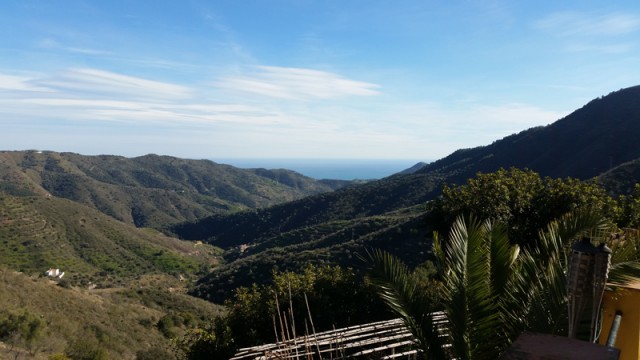
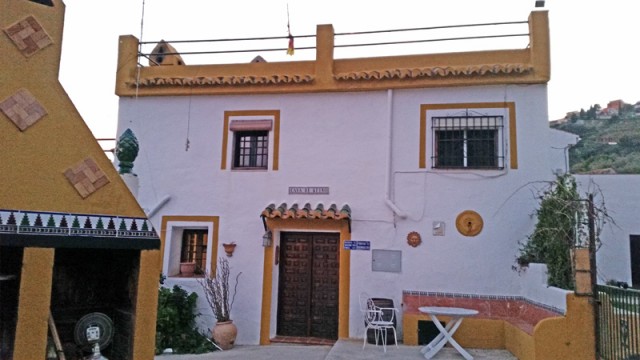
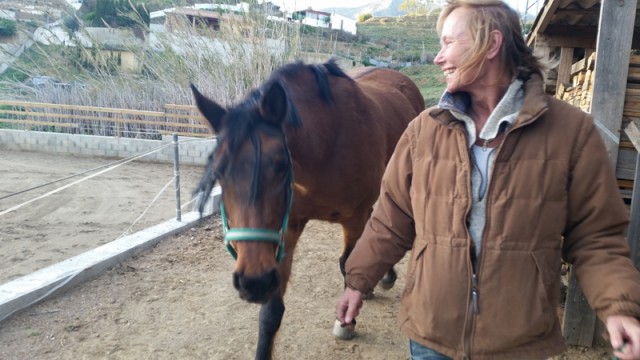
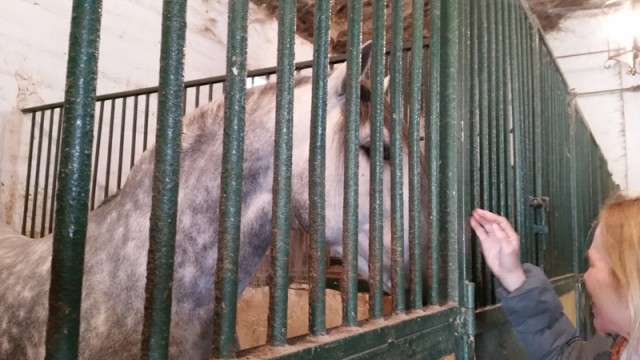
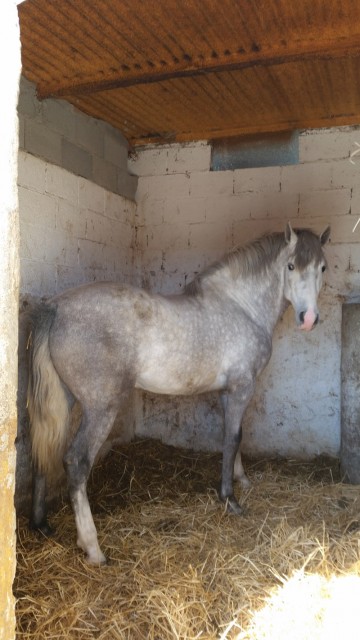
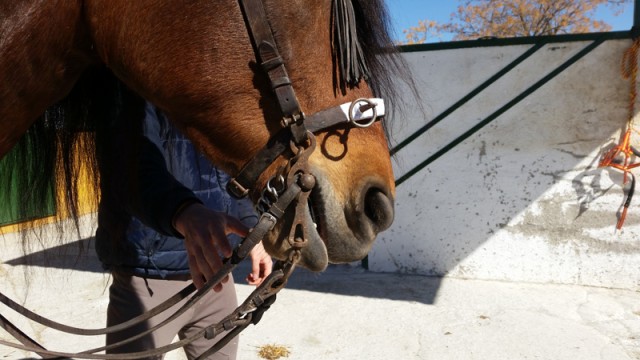
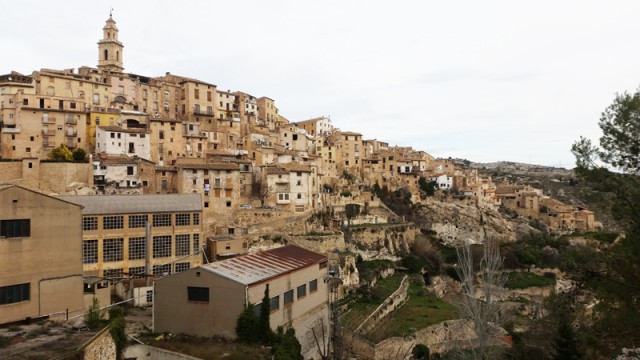

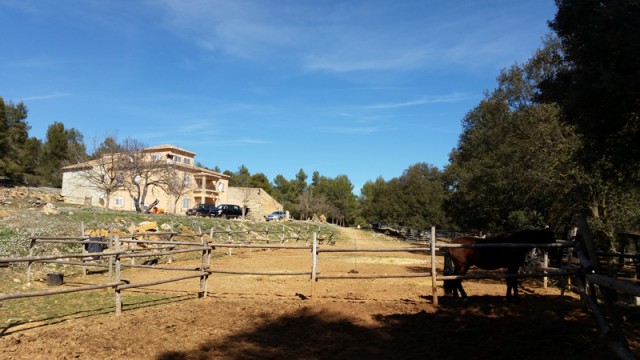
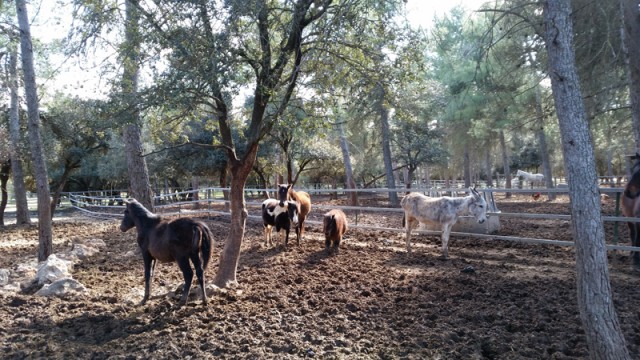
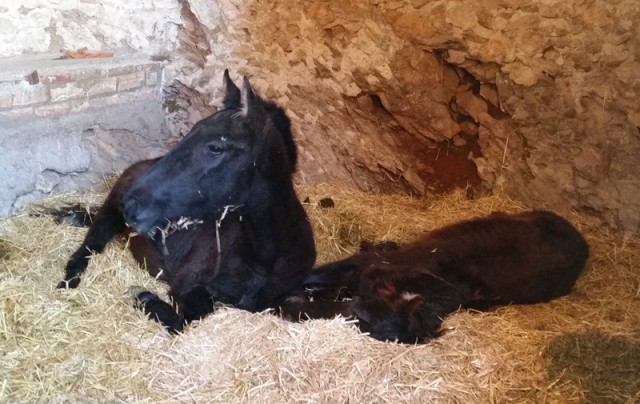
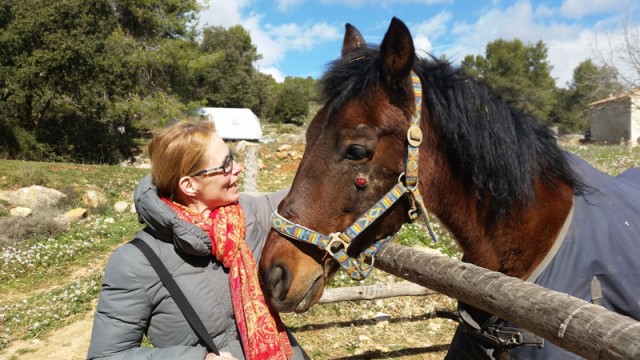
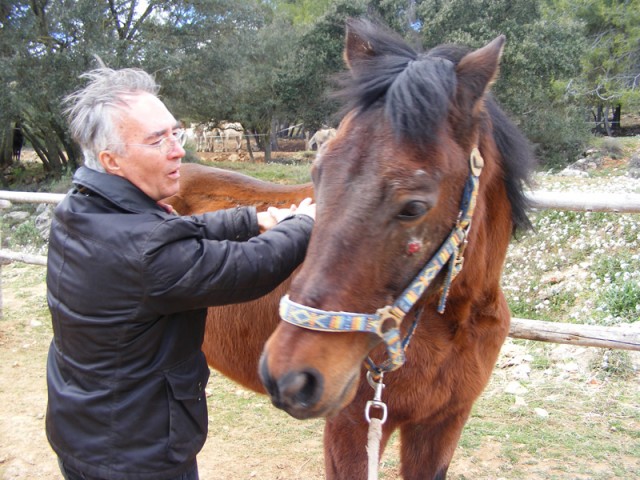



Dear Andrew
What a harrowing experience! It was difficult to see light in what you described – although I did acknowledge your reference to vulnerability and impotence as a valid starting point. As always, your thoughts and observations are extremely thought-provoking. The catch 22 situation about the law and bureaucracy in Spain and the demanding and often inaccessible costs to meet its requirements as an obstacle to otherwise simple solutions also struck home. In sum, those who care are punished harshly by the system – and especially through austerity EU measures and those who orchestrate its policy locally – yes, paradoxically, they have an interest in maintaining austerity as the subsidies empower them.
Well, there is clearly no magic wand that will bring about immediate justice, but shinning a light on the situation may help us to recognize the reality, and work to improving it in whatever way we are able to. At the very least, we will make even more of an effort to see to the needs of the horses we are directly responsible for.
Empowering horse beams to you and your work.
Ian
Dear Ian
To strain a well-worn cliché, sometimes it seems that every silver lining has a cloud. Viewed from another perspective, without the cloud no silver lining would be visible. 🙂
Be well!
Andrew